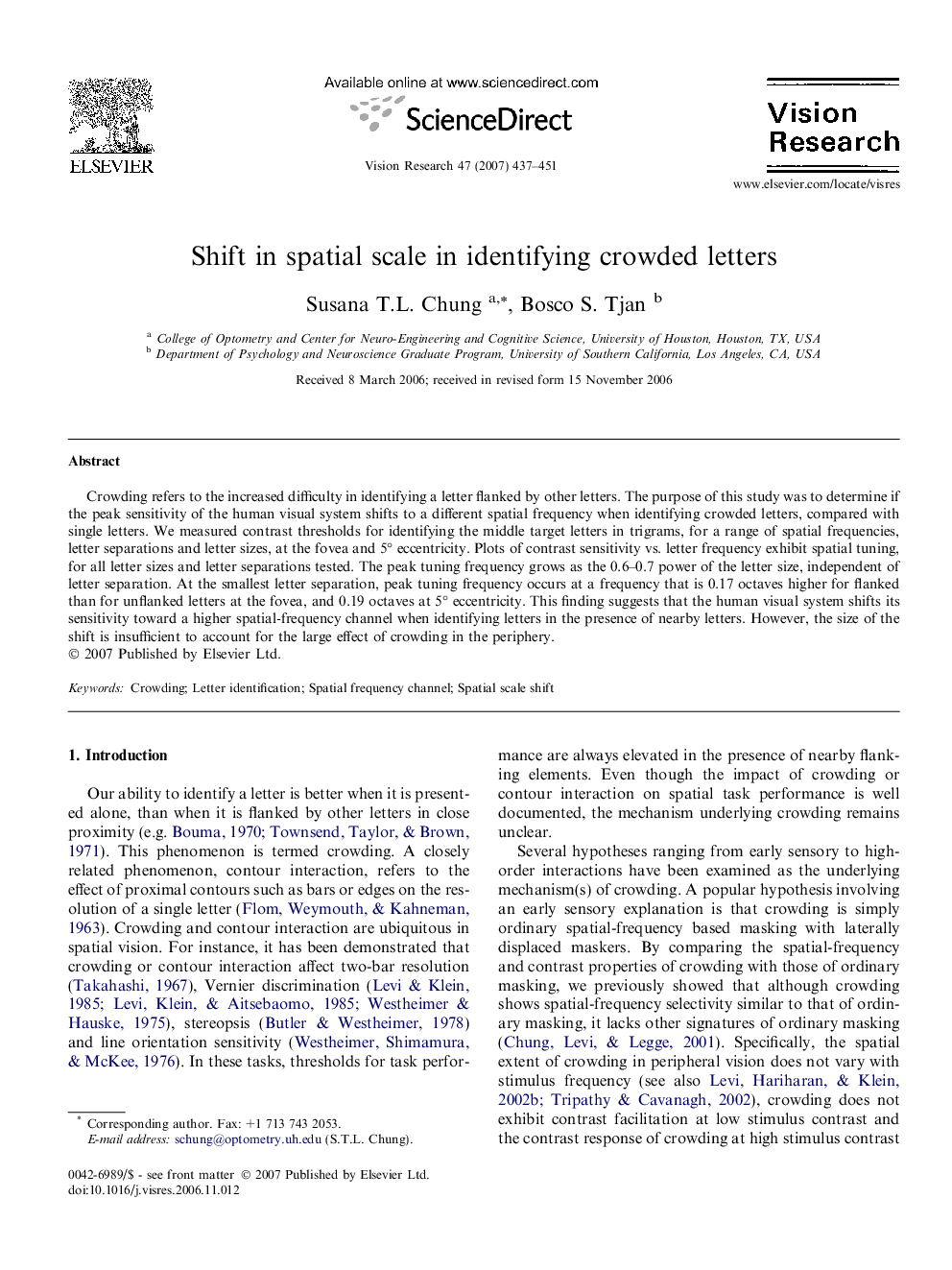| Article ID | Journal | Published Year | Pages | File Type |
|---|---|---|---|---|
| 4035919 | Vision Research | 2007 | 15 Pages |
Crowding refers to the increased difficulty in identifying a letter flanked by other letters. The purpose of this study was to determine if the peak sensitivity of the human visual system shifts to a different spatial frequency when identifying crowded letters, compared with single letters. We measured contrast thresholds for identifying the middle target letters in trigrams, for a range of spatial frequencies, letter separations and letter sizes, at the fovea and 5° eccentricity. Plots of contrast sensitivity vs. letter frequency exhibit spatial tuning, for all letter sizes and letter separations tested. The peak tuning frequency grows as the 0.6–0.7 power of the letter size, independent of letter separation. At the smallest letter separation, peak tuning frequency occurs at a frequency that is 0.17 octaves higher for flanked than for unflanked letters at the fovea, and 0.19 octaves at 5° eccentricity. This finding suggests that the human visual system shifts its sensitivity toward a higher spatial-frequency channel when identifying letters in the presence of nearby letters. However, the size of the shift is insufficient to account for the large effect of crowding in the periphery.
